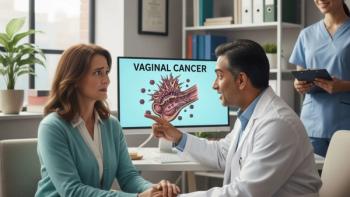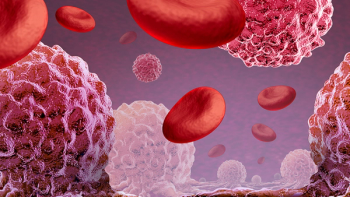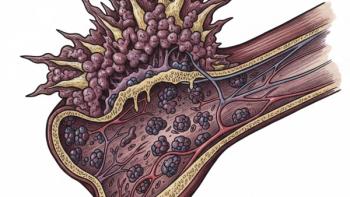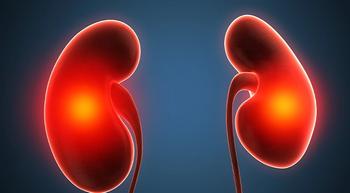
Lung Cancer Basics for Newly Diagnosed Patients
Key Takeaways
- Lung cancer is classified into non-small cell and small cell types, influencing treatment strategies and prognosis.
- Advances in targeted therapies, immunotherapy, and minimally invasive surgeries have improved lung cancer treatment outcomes.
Lung cancer can be overwhelming, but learning about types, stages, treatments and support can help patients feel more prepared for their care journey.
Being diagnosed with lung cancer can feel overwhelming, but learning the basics may help you feel more prepared and confident as you begin your treatment journey. The information below is designed to give you an overview of what lung cancer is, how it’s diagnosed and treated, and what to expect as you move forward. Always discuss these topics with your oncologist, who can tailor information to your specific situation.
Types of Lung Cancer
There are two main categories of lung cancer. Non-small cell lung cancer is the most common, accounting for about 85% of cases. Small cell lung cancer is less common but tends to grow and spread more quickly. Your doctor will determine which type you have, since this guides your treatment options.
“There is a lot going on from a research side in the treatment of small cell lung cancer,”
Sands is a physician at the Dana-Farber Cancer Institute in Boston.
Lung Cancer Staging
Staging describes how far the cancer has grown or spread. In general, earlier stages mean the cancer is limited to the lung, while later stages indicate it has spread to nearby or distant organs. Staging helps your care team recommend the most effective treatment plan.
How is Lung Cancer Diagnosed?
Lung cancer is often found through imaging tests, such as a chest X-ray or CT scan, after symptoms appear or during screening. To confirm a diagnosis, doctors usually perform a biopsy, which involves removing a small piece of tissue to examine under a microscope. Your oncologist may also order blood tests or genetic testing to identify mutations that could affect treatment.
Low-Dose CT Scans
For people at higher risk, such as long-term smokers, low-dose CT scans may be used as a screening tool. These scans can detect lung cancer at an earlier stage, when it may be more treatable. Ask your doctor if you are eligible for screening.
How is Lung Cancer Treated?
Treatment for lung cancer depends on the type, stage and your overall health. Many patients receive more than one type of treatment during their care.
“One thing to acknowledge is that this field is moving fast,”
Surgery
In earlier stages, surgery may be used to remove part or all of the affected lung. Your surgeon will discuss recovery, risks and how much lung function you may keep after surgery.
“Minimally invasive surgery, and specifically robotic surgery, has definitely made a huge difference in patient care and outcomes over the past couple of decades,”
Radiation for Lung Cancer
Radiation therapy uses high-energy beams to target and destroy cancer cells. It can be used alone or in combination with other treatments, and sometimes it helps relieve symptoms such as pain or shortness of breath.
Chemotherapy for Lung Cancer
Chemotherapy uses drugs that circulate through the bloodstream to kill cancer cells. It may be given before or after surgery, or used when cancer has spread. Your doctor will discuss how often you will receive treatment and what side effects to expect.
Targeted Therapy for Lung Cancer
Targeted therapies work by blocking specific changes in cancer cells that help them grow. These treatments are usually given as pills and may be effective for patients whose tumors carry certain genetic changes. Testing your tumor helps determine if these therapies are an option.
How to Manage Lung Cancer Treatment Side Effects
All treatments can cause side effects, such as fatigue, nausea or changes in appetite. Your care team can provide medicines, lifestyle tips or supportive therapies to help manage these effects. Always let your oncologist know about any new or worsening symptoms.
Emotional Well-Being During a Cancer Diagnosis
A lung cancer diagnosis can bring anxiety, stress and sadness. Talking with a counselor, joining a support group or connecting with loved ones may help. Some cancer centers also offer programs for relaxation, mindfulness and stress management.
Survivorship After Lung Cancer
If treatment is successful, your doctor will recommend a follow-up plan that includes regular checkups and imaging tests. Survivorship care may also address long-term side effects, rehabilitation and healthy lifestyle changes to support recovery.
What Happens During a Lung Cancer Recurrence?
Sometimes lung cancer can return after treatment. Your doctor will monitor for this possibility during follow-up visits. If recurrence occurs, new treatments may be available, including clinical trials that test emerging therapies.
What to Take Away
Learning about lung cancer is the first step in feeling more in control of your journey. Use this information to start open conversations with your oncologist, who can explain how these topics apply to you personally. No two patients are the same, and your care plan should reflect your unique needs and goals.
References
- "Lung Cancer Basics for Newly Diagnosed Patients," by Unknown. Unknown Date. "Lung Cancer Basics," by American Lung Association. October 1, 2024.
- "Lung Cancer Basics," by CDC. October 15, 2024. "Lung Cancer Guide," by American Cancer Society, Inc.
- "Lung Cancer: Types, Stages, Symptoms, Diagnosis & Treatment," by Cleveland Clinic. October 31, 2022.
- "Lung cancer - Symptoms and causes," by Mayo Clinic Staff. April 30, 2024.
Editor’s Note: This guide is designed to be a starting point. Your personal experience will be unique. By using this information as a foundation for your discussions, you can partner with your oncologist to make the best decisions for your health.
For more news on cancer updates, research and education,





